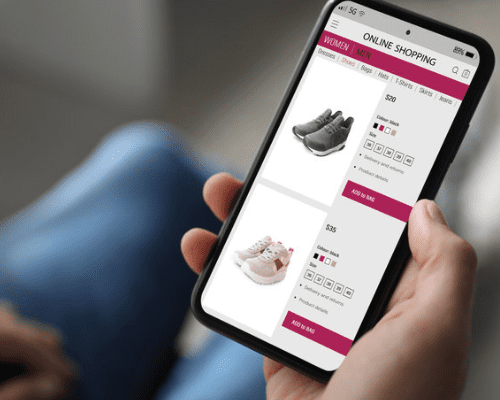Providing an omnichannel experience is increasingly important to meet modern customer expectations. By diversifying the point of interaction across a number of channels—from traditional brick-and-mortar locations to mobile applications—businesses can extend their reach while also ensuring that customers receive a more tailored, individualised service.
Although this approach is nothing new in the world of CRM, the popularity and importance of omnichannel access is growing. 91% of customers now expect continuity of service across a variety of channels, meaning omnichannel service availability has become a fundamental CRM requirement. Furthermore, as expectations vary across these channels, it is essential to develop a streamlined omnichannel strategy that drives loyalty by ensuring a holistic customer experience.
What are the advantages of omnichannel?
Employing an omnichannel CRM strategy allows businesses to reach a wider client base. A business may have a limited number of physical stores in a certain area, but by offering online or telephone services, customers can still have a positive experience regardless of their location.
With this greater degree of convenience through omnichannel connectivity, your company is able to build stronger customer relationships. For example, customers who have busy work schedules will generally be unable to visit a physical store, or contact your company during regular business hours. Offering 24-hour support lines, or a quality mobile app, allows your customers to reach your organisation whenever and wherever it suits them. Services like these can result in up to 89% retention rates, compared to just 33% in businesses with a weak omnichannel experience.
What are the challenges of omnichannel?
The biggest challenge that an omnichannel approach presents is establishing consistent, high-quality service across all channels. According to a 2017 Zendesk multi-channel report, customers expect different speed of service depending on whether the channel is email, phone or social media. As one of the cornerstones of an omnichannel strategy is a holistic customer experience regardless of channel, this can prove challenging in order to ensure consistency.
Although the digitalisation of our society is undeniable, it is also true that not all customers feel the same degree of comfort in their interactions with organisations across all channels. It is therefore imperative that businesses focus on enhancing the customer experience in every channel, from the most traditional to the most cutting-edge.
Best practices to optimise your omnichannel CRM approach:
1. Maintain fast response times: One of the great advantages of going mobile is that it facilitates instant communication between customer and organisation. However, studies show that today’s consumer is becoming increasingly impatient, with 75% of online customers expecting assistance within 5 minutes on some channels. Leaving your customers waiting could have catastrophic effects on your business, as they may interpret slow response times as a lack of care or poor-quality customer service. To avoid this, it is important to have enough staff on-hand at all times to meet demands.
2. Empower your staff on all channels with thorough training: A great feature of the omnichannel approach is that customers can use more than one channel simultaneously, switching between them at their convenience. By providing all customer service agents with at least a working knowledge of how each platform works, or allowing access to queries that appear on the different channels, your customers will enjoy a more coherent and consistent omnichannel experience. Employees should be in constant communication with one another, which will establish a smooth customer journey. For this to be successful, consider joining the 85% of businesses that conduct regular training of customer assistance agents to maintain a high quality of customer service.
3. Empower the customer by enabling self-service through FAQs: Save time and resources by developing a comprehensive FAQs page, accessible across online channels. In addition to freeing up customer service agents for more complex queries, FAQs offer a good opportunity to introduce clients to your organisation’s voice. Perhaps also consider creating an online forum, where customers can share their experiences of common issues between themselves, moderated by trained customer assistant agents.
4. Understand and utilise customer behaviour data: Customer behaviour data should be driving the way in which you design and leverage all of your customer support channels. This naturally involves regularly collecting updated information on your consumer base. For example, studies show that 60% of online adults use at least two devices every day in the UK. This insight can help UK businesses begin to think about ways in which they can reach customers on a variety of devices.
5. Don’t neglect traditional modes of customer interaction: 90% of customers expect consistent interactions across channels, and each customer has a channel preference. While the innovation and novelty of mobile applications may be attractive to some, there are many customers that still appreciate the in-store experience. Therefore, ensure that you continue to offer a high-quality face-to-face service. It will build trust and ultimately boost customer loyalty.
Adopting an omnichannel approach can add great benefits to your business performance. If properly implemented, you can guarantee a consistent customer experience that both improves your customer reach and helps to convert and retain new leads. By demonstrating a high degree of adaptability, a genuine interest and consistent high quality, you will inspire a strong base of loyal customers that are essential to driving long-term, sustainable success.









